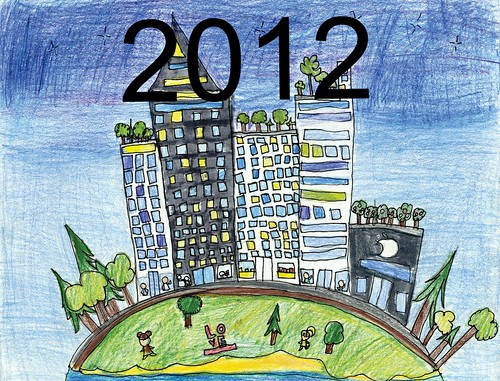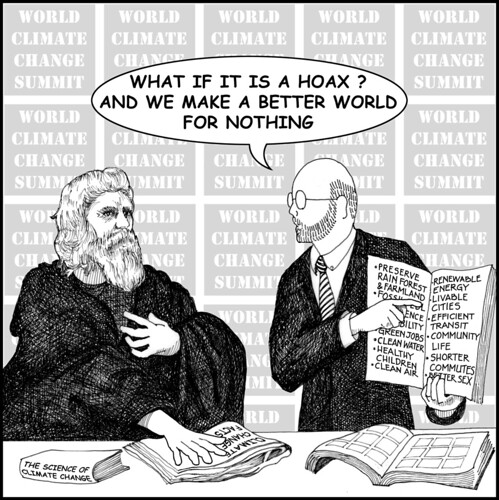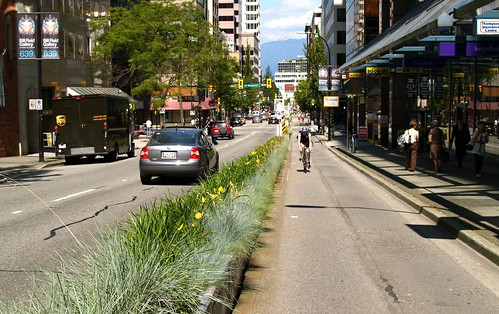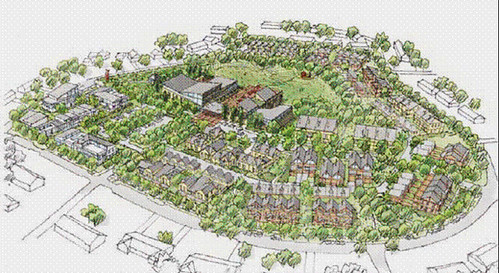The best of 2012 in green community solutions: a personal, eclectic list

Posted December 31, 2012 at 1:31PM
As we look back on the year that was, let’s honor some of the outstanding issues and accomplishments for community sustainability that came to light during the year. In many cases, naming a particular item one of the best of 2012 may be a bit (not completely) arbitrary: by definition, sustainability is seldom a single “event” that occurs wholly within one calendar year. But, in each of these cases, something caught my attention this year.
Mine is a very personal list. Yours may differ, which is part of the fun. Let’s get to it.
- Best community sustainability issue that reached critical mass this year: water. Maybe it’s that I work for NRDC, whose water team has become invested in community solutions in a big way. My colleagues published the second edition of our major green infrastructure report, Rooftops to Rivers, late last year, celebrating the efforts of cities across the country in solving serious runoff pollution problems with smart landscaping, green roofs, permeable paving and related approaches that also make dense neighborhoods healthier and more beautiful. This year, they followed up with another (and seriously wonky) report detailing how local and state governments can potentially stimulate billions of dollars in private investment in these solutions. And, as the year drew to a close, superstorm Sandy had demonstrated with terrible ferocity the importance of urban water management to a resilient future.
But, beyond NRDC’s work or individual storm events, a lot of good things happened in 2012 to mark significant progress in using soft approaches to cleaner watersheds. In particular, the federal EPA approved Philadelphia’s plan to deploy the most comprehensive green infrastructure program found in any US city; New York City announced that it, too, was embarking on a major green infrastructure program to reduce runoff and resulting sewage overflows;
Washington, DC proposed a comprehensive zoning update that will include, among other things, green infrastructure requirements for new construction, and settled a lawsuit by agreeing to tighter deadlines for waterway cleanup.
Meanwhile, the city of Chicago announced a program of small grants to help individual homeowners adopt “backyard” projects such as plantings and rain barrels that help clean the watershed; and, in Seattle, long a leader in these issues, Washington State University and the non-profit Stewardship Partners are working to install 12,000 rain gardens in Puget Sound communities by 2016. If you’re working on city sustainability and aren’t including clean water solutions in your portfolio, you’re not just overlooking a critical set of concerns but also missing a lot of creativity and excitement.
- Best regional plans for thoughtful land use and transportation investment: the Southern California and Sacramento Sustainable Communities Strategies. The best work to emerge so far from the implementation of California’s SB 375, the state’s landmark smart growth legislation, these two plans tackle climate change by placing a majority of new homes and jobs in transit-accessible locations, reducing traffic and related carbon emissions, preserving single-family neighborhoods, and saving hundreds of square miles of farmland and open space. Now the plans must be carried out, of course, but the law’s mix of carrots and sticks makes me hopeful.
- Best provocative new book: The Space Between. This one was a very tough call, given The Walkable City, Jeff Speck’s definitive work on how to shape cities that put people, not cars, first, and Chuck Marohn’s burning fiscal indictment of sprawl, Thoughts on Building Strong Towns. But my nod goes to Eric Jacobsen’s Christian case for cities, The Space Between, because of its freshness.
- Best expansion of the green city vocabulary: Walk Appeal. This one comes from Steve Mouzon, who also gave us the apt phrase “original green” to describe buildings and communities that respond to environmental issues naturally rather than with technological add-ons. “Walk appeal” describes the extent to which a street or community induces us to use our feet simply because it’s enjoyable. (Honorable mention: Scott Doyon's “pub shed.”)
- Best well-deserved recognition for a sustainability leader: Dr. Richard Jackson’s Heinz award. Long a champion of safe, walkable, clean neighborhoods, Dick Jackson is chair of the department of environmental health sciences at UCLA. He’ll be the first to tell you that he’s far from the only one who is showing us why we need to improve our built environment to protect human health. But no one does it with more conviction and authority. This year Dick’s fantastic work earned a prestigious Heinz award; I can’t think of anyone more deserving.
- Best new idea in community revitalization: use of LEED-ND as a planning framework for recovering neighborhoods. OK, I’m (very) biased on this one. But many of us involved in the creation of the green rating and certification system LEED for Neighborhood Development hoped from the beginning that the system would find multiple informal uses for citizens and planners in addition to its formal application in honoring worthy new development with certification. Constructed as a logical, ordered framework of standards measuring neighborhood characteristics that affect sustainability, LEED-ND also provides a structure for guiding the thinking of community development corporations and other leaders of distressed city neighborhoods as they plan improvements. It is now being used for just that purpose in Philadelphia, Indianapolis, Boston, Los Angeles, and perhaps elsewhere.
- Best municipal blueprint for changing an unsustainable community into a sustainable one: Plan El Paso. This superlative city plan could just as easily have been picked as one of the best in 2011, when it was preliminary and EPA recognized it with a national award for achievement in smart growth. But, in March of this year, the city council formally adopted it and, in November, El Paso voters approved the issuance of $473 million dollars' worth of bonds to begin funding it. These actions give us another opportunity to salute the city's leadership – and the skill of its planning team – in moving forward with what may well be the nation’s best-articulated commitment to a more sustainable future in a community not previously known for environmental aspiration.
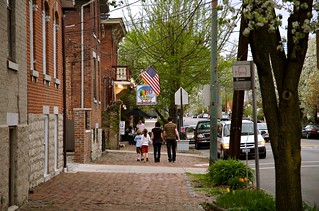 Best continually improving and evolving sustainability tool: Walk Score. The genius of Walk Score is its simplicity: enter an address and you get a numerical rating from zero to 100 instantly. Walk Score isn’t perfect, particularly because it relies on imperfect databases and also because it attempts to quantify something – walkability – that is partially subjective. But it’s incredibly good in approximating the relative completeness and convenience of locations. Best of all, its keepers don’t rest on their laurels but continuously tinker with the system's underpinnings to make it more reliably accurate. (Honorable mention in this category goes to the ever-improving and highly useful Housing + Transportation Affordability Index from the Center for Neighborhood Technology.)
Best continually improving and evolving sustainability tool: Walk Score. The genius of Walk Score is its simplicity: enter an address and you get a numerical rating from zero to 100 instantly. Walk Score isn’t perfect, particularly because it relies on imperfect databases and also because it attempts to quantify something – walkability – that is partially subjective. But it’s incredibly good in approximating the relative completeness and convenience of locations. Best of all, its keepers don’t rest on their laurels but continuously tinker with the system's underpinnings to make it more reliably accurate. (Honorable mention in this category goes to the ever-improving and highly useful Housing + Transportation Affordability Index from the Center for Neighborhood Technology.)- Best accumulated body of recent work by a federal agency: HUD. As I wrote earlier this month, I have been seriously impressed by the community-building work of the federal Department of Housing and Urban Development since its Office of Sustainable Housing and Communities was created almost three years ago. Working with an extremely limited budget (as federal programs go), HUD continues to assist cities and towns all over the country as they develop commitments and investment for a more resilient, greener future. It’s a remarkable portfolio of accomplishment. (Honorable mention to the work of the National Endowment for the Arts, including its Our Town program, and to EPA’s always-impressive Office of Sustainable Communities.)
- Best little-known work by a community-based non-profit that deserves a pat on the back: The Boston Project. A faith-based organization in the city’s Talbot Norfolk Triangle district, the Boston Project embodies “a passion for seeing renewal in urban neighborhoods.” It was founded by Paul and Glenna Malkemes, who run the organization’s activities out of their house; the first floor serves as a free, pleasant and safe drop-in center where youth can come and go at their leisure to do homework or enjoy fellowship. With its affiliate TNT Neighbors United, the project is working, with some success, to create “a multi-site urban garden” with a walkable route that connects community green spaces such as planned play areas, passive parks, vegetable gardens, and orchards.
- Best body of educational work by a national non-profit: American Society of Landscape Architects. With a relatively small staff, ASLA is quietly doing incredibly innovative work that improves city communities. Go to the organization’s web site and see, among other things, 30 (mostly urban) case studies that illustrate the transformative effects of sustainable landscape design; animations of the possible, using Google Sketchup to show how to build parks out of waste, design neighborhoods for active living, create smart landscaping that saves energy, transform ugly transportation infrastructure into attractive people spaces, and design wildlife-friendly neighborhoods; a guide to the beautiful hidden spaces of Washington, DC; a study on the economic benefits of green infrastructure; an interactive tour of the Society’s own innovative green roof; materials on brownfields transformation; and much more. Not to mention the Sustainable Sites Initiative, a partnership undertaking that seeks to do for landscapes what LEED has done for buildings and neighborhood development. Very, very impressive. (Honorable mention: Project for Public Spaces.)
- Best sustained excellence in writing about people and community: PlaceShakers. The hard-to-define, geographically dispersed firm PlaceMakers does a lot of things, but what I like best about them is their writing, in the PlaceShakers blog. Scott Doyon, Ben Brown, Hazel Borys and company are kind of all over the place in what they think and write about, and that’s a very good thing. While it all comes back, one way or another, to a decidedly new urbanist view of community design (form-based codes, the transect, skinny streets, and so forth), it’s a refreshingly broad and very well-written take on that approach. Scott, for instance, explains walkability by reference to where the bars are in his community; Hazel links neighborhood feel to Christmas carols and a meditation on the Ode to Joy that most of us know as the last movement of Beethoven’s Ninth Symphony; when Ben discusses the intricacies of housing market trends, you feel as if they are being explained by your favorite uncle. And, yes, the rest of them write, too. Their articles aren’t lectures so much as stories told by interesting and fun people who, in the process, tell you as much about themselves as about their subject matter.
- Best architecture/planning firm of the year: Mithun. There are firms that design outstanding urbanism. And there are firms that design outstanding green buildings and community features. But there is none that integrates those two important concepts – both critical for sustainability – better than Seattle-based Mithun. I reported on two of its projects during the year: the firm was the guiding force behind Denver’s award-winning Mariposa project as well as the master planner for the excellent green revitalization concept for the Sunset neighborhood of Renton, Washington. Late in 2012 Mithun added significant talent and capacity by merging with the highly accomplished, San Francisco-based Daniel Solomon Design Partners, long a leader in urbanist design solutions. It will be exciting to see how the firm’s work will continue to evolve.
Not a bad year, that. Next, I’ll look at some stories to follow in 2013. Happy New Year, everybody.
Related posts:
- HUD builds impressive record of support for smarter community planning (December 5, 2012)
- EPA honors seven outstanding community sustainability projects (November 28, 2012)
- Sandy as preview: making communities more resilient to severe climate events (with Lee Epstein) (November 5, 2012)
- How California is planning growth for a prosperous economy and clean environment (September 25, 2012)
- How far will we walk to go somewhere? It depends. (July 30, 2012)
- Walk Score gets interactive, makes space for user photos & comments (September 26, 2012)
- Kaidslist: the trendy Ins and Outs of smart growth & sustainability (February 15, 2011)
Move your cursor over the images for credit information.
